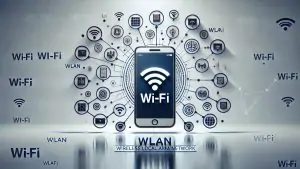Sensors are devices or components that detect changes in the environment or system they are in and convert this information into signals that can be measured, analyzed, and used. In the context of electronic devices like smartphones, tablets, wearables, and other gadgets, sensors play a crucial role in enhancing functionality and user experience by providing various data inputs.
Key Types of Sensors in Electronic Devices
- Accelerometer: An accelerometer measures the acceleration forces acting on a device. It detects changes in the device’s orientation and movement, such as tilting, shaking, or rotating. This sensor is commonly used for screen rotation, step counting, and gaming applications.
- Gyroscope: A gyroscope measures the angular velocity or the rate of rotation of a device. It complements the accelerometer by providing more precise orientation information, allowing for smooth and accurate motion detection in applications like virtual reality (VR), augmented reality (AR), and navigation.
- Magnetometer: This sensor detects magnetic fields and is primarily used to determine the device’s orientation relative to the Earth’s magnetic field. It is commonly used in digital compasses and for navigation purposes.
- Proximity Sensor: A proximity sensor detects the presence of objects near the device without physical contact. In smartphones, it is typically used to turn off the display when the device is held close to the face during a call, preventing accidental touches.
- Ambient Light Sensor: An ambient light sensor measures the intensity of light in the surrounding environment. It is used to adjust the brightness of the device’s display automatically, optimizing visibility and saving battery life.
- Barometer: A barometer measures atmospheric pressure. In mobile devices, it is used to determine altitude changes, which can be useful for navigation, weather prediction, and fitness tracking.
- Fingerprint Sensor: A fingerprint sensor captures and verifies a person’s fingerprint for authentication. It is commonly used for unlocking devices, authorizing payments, and securing applications.
- Heart Rate Sensor: This sensor measures the user’s heart rate by detecting the pulse through the skin. It is commonly found in fitness trackers and smartwatches, providing data for health monitoring and exercise tracking.
- Temperature Sensor: Temperature sensors measure the temperature of the environment or the device itself. In mobile devices, they can be used to monitor and manage device temperature to prevent overheating.
- GPS (Global Positioning System): While not a traditional sensor, GPS functionality in devices provides location data by communicating with satellites. It is essential for navigation, location-based services, and tracking.
- Microphone: A microphone captures sound and converts it into electrical signals. It is used for voice commands, audio recording, calls, and voice recognition applications.
Uses of Sensors
- Navigation and Location Services: Sensors like GPS, magnetometers, and accelerometers are used in navigation apps and location-based services to provide accurate positioning and directions.
- Health and Fitness Tracking: Sensors such as accelerometers, heart rate monitors, and barometers are essential in fitness trackers and smartwatches, providing data on physical activity, heart rate, altitude changes, and more.
- User Interaction: Proximity sensors, ambient light sensors, and touch sensors enhance user interaction by adjusting screen brightness, detecting gestures, and enabling features like auto screen-off during calls.
- Security and Authentication: Fingerprint sensors and facial recognition systems use various sensors to secure devices and authenticate users.
- Enhanced Reality Applications: Gyroscopes, accelerometers, and magnetometers enable augmented reality (AR) and virtual reality (VR) experiences by tracking device orientation and movement.
Importance of Sensors
Sensors are integral to the functionality and user experience of modern electronic devices. They provide valuable data that enables a wide range of features, from simple tasks like adjusting screen brightness to complex applications like augmented reality. The information collected by sensors enhances the usability, security, and functionality of devices, making them more intuitive and responsive to users’ needs. As technology continues to advance, sensors are becoming more accurate, efficient, and capable, further expanding the possibilities for innovation in consumer electronics and beyond.



